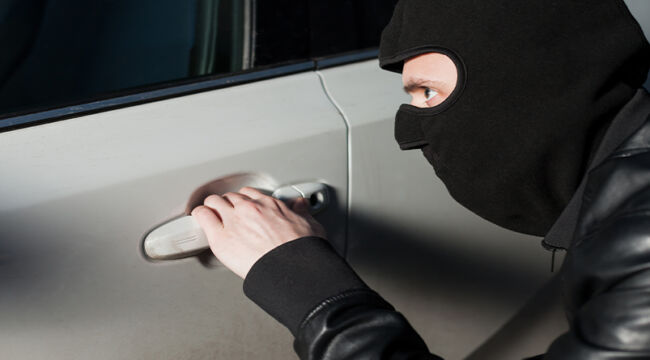A Carjacking Survival Guide
Carjacking has reached epidemic proportions in major U.S. cities and even some suburban areas. What used to be a somewhat rare crime (or almost unheard of in many areas) has now become commonplace. Here are some headlines just from the past 48 hours as of this writing:
“Man critically injured in shootout during attempted car-jacking on West Side”
KABB Fox 29, San Antonio
“Man stabbed in attempted carjacking on South Side, two suspects at large.”
WOAI News4SA, San Antonio
“Deputies pursue carjacking suspect through East Los Angeles”
KCAL, CBS News, Los Angeles
“Bend police find gun used in carjacking attempt”
KTVZ News Channel 21, Oregon
There’s no need to highlight particular crimes or cities. It’s happening everywhere.
You’re Not Safe Anywhere
It was once the case that you were safe from carjacking unless you were in a known bad neighborhood in the middle of the night. No one wants to blame the victim, but if you were carjacked at 3:00 am in the South Bronx, an observer might question your judgment for being there at that hour. But the assumption of safety in upscale locations or during working hours is no longer true.
Carjackings occur routinely in broad daylight in expensive neighborhoods including Park Avenue in New York City and Beverly Hills. There are no longer any “safe” neighborhoods.
Police still do their jobs, but they can’t be blamed for not confronting every gang that looks like they’re up to no good. Cities around the country have decided to defund the police. When police do confront potential wrongdoers, they’re accused of racism or profiling. If police do make arrests in a carjacking, progressive DAs reduce the charges or release the defendants without bail. The carjackers are back out on the street the next day ready to steal another car.
Many carjackers don’t get far. They are reckless and nervous and possibly high on drugs. They are either chased immediately by police or they abandon the car within a mile or so of the crime scene because they see police or just get cold feet. Many manage to wreck the cars because they’re speeding or are just bad drivers. Location devices that sync the car to the owner’s mobile phone and can be shared with police help a lot. Too bad the carjackers don’t think of this before they steal the car.
For those who get away, there’s a highly sophisticated pipeline of Mafia-type intermediaries who will take the car for a relatively small amount of cash. They have garages to hide them and eventually ship them to West Africa, especially Ghana, where an international black market in stolen vehicles thrives. A lot of the money that is paid for the stolen cars goes to support Hezbollah in Lebanon. Israel has been doing a good job of destroying the Hezbollah end of that market lately.
More often than not, the carjackers will approach your car in groups of two or three waving semi-automatic handguns and ordering you out of the car. They may try to steal your wallet and mobile phone in the process. Just get out of the car and hand over the goods. None of that is worth your life. New mobile phones are easy to get. Everything should be covered by insurance.
(I don’t advocate gunfights in the street, but it’s the case that most of the cities where carjacking is at its worst do not offer reciprocity for concealed carry permits from other states and make it almost impossible to get a gun permit in their city or state. So, in all likelihood you won’t have a gun handy even assuming you know how to use it).
Strategies To Keep You Safe
While there may not be a lot you can do when the carjackers are waving a gun in your face, there is a lot you can do to avoid being in that situation in the first place. Here are some strategies to avoid the worst:
Don’t drive. Most major cities have relatively good mass transit systems including commuter rail lines, light rail, subways or buses. If you live along those lines, you can just take a train or bus to the downtown area. A slightly more expensive but comfortable alternative is to use a limo service or UBER.
You can ride in comfort and the cost is small relative to the cost of having your car stolen. If you’re coming from a long distance, you can locate a commuter railroad station with parking (usually only $10.00 per day in suburban areas), park there and ride the train the rest of the way to your destination. You have the convenience of your car for most of the trip but avoid driving into the urban combat zone.
Drive a junker. Buy a used car that’s reliable but not particularly desirable. Choose something smaller than what you typically drive with a boring 4-cylinder engine. A dented door or side panel wouldn’t hurt. The idea obviously is to drive something no one would bother to steal. An Audi S5 Sportback sedan with 359 horsepower(that’s what I drive) practically has “Steal Me” painted on the hood. Don’t dare drive that or anything like it in Washington DC, New York, Chicago, Los Angeles or other major cities. Instead, drive something beaten up that would embarrass your date at a gala event. That should be safe.
Leave getaway room. This is a standard safety technique taught at driving schools and police training courses. When you come to a red light or other obstacle with traffic in front of you do not pull up close to the car in front. If you do, you’ll have no room to maneuver if trouble presents. Instead, stay back at least a half car length. That way, you’ll be able to pull out to the left or right (depending on what’s in the adjacent lanes) if you see gangbangers roaming the vicinity.
This is a technique that is taught to those who work at CIA headquarters in McLean, VA. The entrance to CIA from downtown McLean involves a left turn at a traffic light on eastbound Route 123. In 1993, a Pakistani radical shot and killed two CIA employees in their cars waiting for the light to turn green. The radical escaped but was later caught in Pakistan, extradited, found guilty and executed by lethal injection. Since then, CIA employees have been trained to leave space in the traffic queue so they can escape in their cars if trouble erupts.
Situational awareness. Regardless of the car you’re driving, the specific location or the time of day, pay attention! Don’t get so lost in the podcast or music on your sound system that you take your surroundings for granted. Look around and pay special attention to anything that doesn’t quite “fit the scene” or doesn’t seem right. It could be a beat-up car with dark-tinted glass in an expensive neighborhood. That car could contain the carjackers waiting to pounce. Be alert.
You don’t need to be a hero if there’s a gun in your face, but you don’t need to be a victim either. Carjacking is at a crisis stage. Hopefully, these tips can help you avoid that fate.
We wish you and yours a Happy New Year and a safe 2025.



Comments: